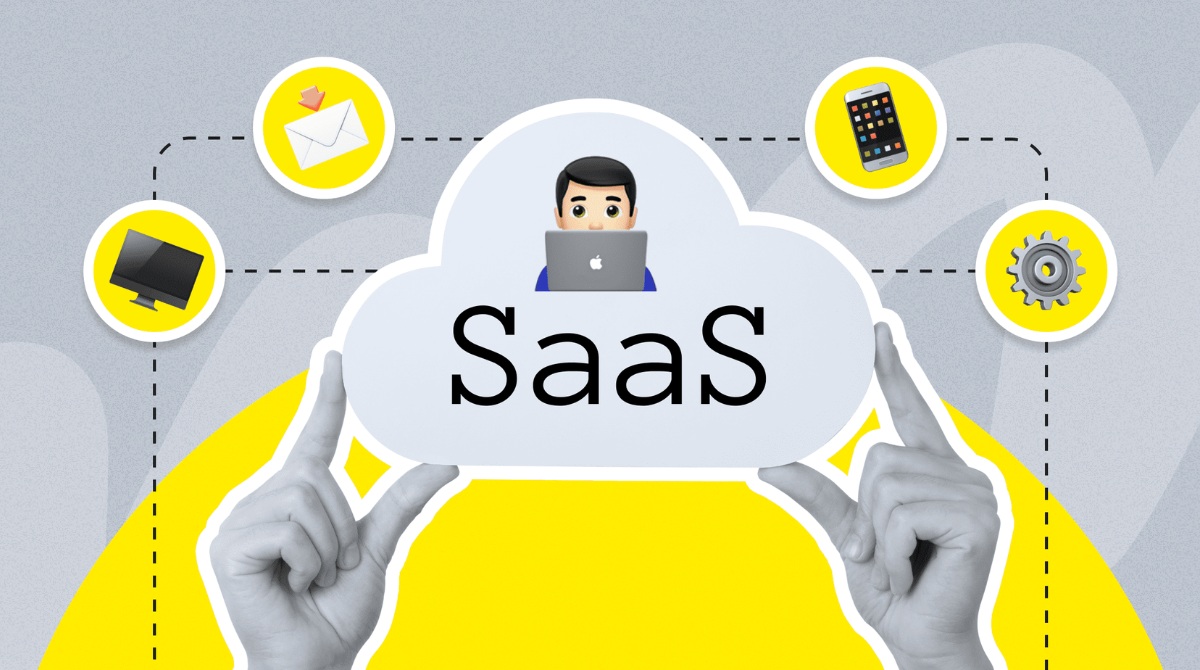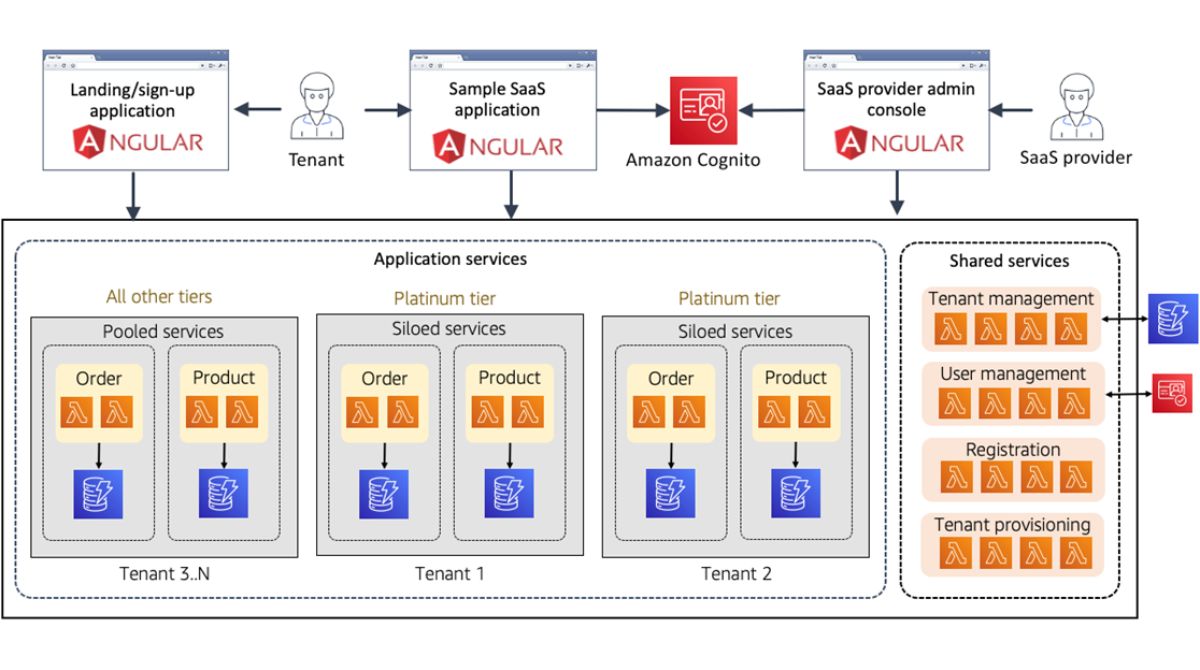Introduction
Welcome to the world of Software-as-a-Service (SaaS) onboarding! In this article, we will explore the importance of a successful SaaS onboarding process and how it can significantly impact the success and retention of your customers. Whether you are a SaaS provider or a user looking to implement a new software solution, understanding the best practices for onboarding is crucial to ensure a smooth transition and maximize the value of your investment.
But what exactly is “onboarding” in the context of SaaS? In simple terms, it refers to the process of getting users acquainted and engaged with your software solution from the moment they sign up. It’s about guiding them through the initial steps, setting expectations, and addressing their needs and concerns to ensure a positive user experience. A well-designed onboarding process not only helps users get up and running quickly but also increases their likelihood of becoming long-term satisfied customers.
Why is a successful SaaS onboarding process crucial, you may ask? The answer lies in the statistics. Research has shown that a significant percentage of users abandon software within the first few days or weeks due to a lack of understanding, complexity, or frustration. This can be a huge blow to SaaS providers who invest time and resources in acquiring customers, only to lose them during the onboarding phase. On the flip side, a seamless onboarding process has been proven to increase customer retention, engagement, and overall satisfaction levels.
In the following sections, we will delve deeper into the different aspects of a successful SaaS onboarding process. We will explore how to set clear goals and objectives, design a seamless user experience, analyze user data, create user-friendly documentation, provide effective customer support, implement user feedback, and measure the success of your onboarding efforts. By the end of this article, you will have a comprehensive understanding of the key factors that contribute to a successful SaaS onboarding process.
Why a successful SaaS onboarding process is crucial
A successful SaaS onboarding process plays a crucial role in ensuring the long-term success and satisfaction of your customers. Let’s explore why it is so important:
1. First impressions matter: The initial interaction with your software sets the tone for the entire user experience. If users struggle to understand or navigate your product early on, they may become frustrated and abandon it altogether. A well-executed onboarding process creates a positive first impression, making users feel confident, excited, and motivated to continue using your software.
2. Reduced time to value: Users are more likely to stay engaged and become loyal customers if they can quickly and easily experience the value your software provides. A successful onboarding process focuses on guiding users to achieve their desired outcomes efficiently. By helping them realize the benefits of your software faster, you increase the chances of retaining them for the long term.
3. Increased user satisfaction: When users feel supported and guided throughout the onboarding process, their satisfaction levels skyrocket. A smooth onboarding experience strengthens their confidence in your product and builds trust in your brand. This positive user sentiment not only leads to higher customer retention rates but also generates positive word-of-mouth recommendations, attracting more potential customers.
4. Decreased support costs: A poorly designed onboarding process often results in increased customer support requests and inquiries. This can strain your support team, leading to longer response times and frustrated users. On the other hand, a successful onboarding process, complete with clear documentation and resources, helps users self-serve and reduces the need for extensive support. This not only saves time and resources but also improves the overall customer experience.
5. Enhanced product adoption: The onboarding process is an opportunity to educate users about the various features and functionalities of your software. By teaching them how to leverage these capabilities effectively, you increase the likelihood of users adopting and utilizing more aspects of your software. This, in turn, leads to higher product usage and overall customer success.
6. Proactive churn prevention: Early-stage churn is a significant challenge for SaaS businesses. Many users abandon software due to difficulties during the onboarding phase. By providing a seamless onboarding experience, you can minimize churn and mitigate revenue loss. A successful onboarding process helps users see the value and potential of your software, reducing the chances of them seeking alternatives.
As you can see, a successful SaaS onboarding process is critical for acquiring, retaining, and satisfying your customers. It sets the foundation for a positive user experience, promotes faster time to value, reduces support costs, enhances product adoption, and prevents churn. In the following sections, we will delve into the strategies and best practices to create an effective onboarding process that addresses these key aspects.
Understanding the Importance of User Onboarding in SaaS
When it comes to Software-as-a-Service (SaaS), user onboarding is a critical element of success. User onboarding refers to the process of getting users acquainted with your software and ensuring a smooth transition from sign-up to active usage. It plays a pivotal role in driving customer adoption, satisfaction, and long-term retention. Let’s delve deeper into why user onboarding is so important in the SaaS industry:
1. Maximizing the value of your software: SaaS solutions often come with a wide array of features and functionalities. Without proper onboarding, users may struggle to understand how to utilize these to their full potential. By providing a structured onboarding process, you enable users to discover and make the most of the value your software offers. This, in turn, enhances their experience and makes them more likely to become loyal customers.
2. Guiding users through complexity: Some SaaS platforms can be complex, requiring users to learn new workflows and adapt to unfamiliar interfaces. User onboarding is essential to guide users through this complexity, simplifying the learning curve and empowering them to navigate your software with ease. By breaking down complex concepts into digestible chunks and offering step-by-step guidance, you improve user comprehension and reduce frustration.
3. Building trust and confidence: The onboarding process is an opportunity to build trust and confidence with users. By providing clear instructions, helpful resources, and timely support, you show that you value their success and are committed to their satisfaction. Trust is crucial in convincing users that your software is reliable, secure, and worth their investment of time and money.
4. Improving user retention: User onboarding is closely linked to customer retention. If users feel lost, confused, or overwhelmed during the initial stages of using your software, they are more likely to abandon it. A well-executed onboarding process reduces the risk of churn by helping users quickly understand and experience the benefits of your software. By increasing user retention, you create a steady revenue stream and build a loyal customer base.
5. Facilitating word-of-mouth referrals: A positive onboarding experience can lead to enthusiastic recommendations and word-of-mouth referrals. When users have a seamless and successful onboarding journey, they are more likely to share their positive experiences with others. This organic form of marketing can attract new users and expand your customer base.
6. Gaining insights for product improvement: The onboarding process provides valuable opportunities for gathering user feedback and gaining insights into areas of improvement. By actively listening to user suggestions and pain points during onboarding, you can refine your software and enhance the overall user experience. This iterative approach helps you stay competitive in a rapidly evolving SaaS landscape.
Understanding the importance of user onboarding in the SaaS industry is crucial for unlocking the full potential of your software and driving customer success. By maximizing value, guiding users through complexity, building trust, improving retention, facilitating referrals, and gathering insights, a well-designed onboarding process sets the stage for a positive user experience and long-term satisfaction. In the next sections, we will explore the key steps and strategies to create a successful SaaS onboarding process.
Setting Clear Goals and Objectives for the Onboarding Process
Setting clear goals and objectives for your SaaS onboarding process is paramount to its success. Without a clear direction, your onboarding efforts may lack focus and fail to deliver a seamless and effective user experience. Let’s explore the key aspects of setting goals and objectives for your onboarding process:
1. Define your desired outcomes: Start by identifying what you want to achieve through the onboarding process. Are you aiming to increase user activation, improve feature adoption, or reduce time to value? Define specific, measurable objectives that align with your business goals. This will provide clarity and guide your efforts in designing the onboarding process.
2. Understand your target audience: Have a clear understanding of your target audience’s needs, pain points, and desired outcomes. Each user segment may have different requirements and expectations from the onboarding process. By segmenting your user base and tailoring the onboarding experience to their unique needs, you can deliver a more personalized and effective onboarding journey.
3. Map out the user journey: Develop a step-by-step roadmap of the onboarding process, outlining the key touchpoints and interactions that users will encounter. This helps you visualize the entire user journey and identify potential bottlenecks or areas for improvement. By mapping out the user journey, you can proactively address user needs and guide them towards achieving their desired outcomes.
4. Prioritize essential features and functionalities: Not all features and functionalities of your SaaS solution may be relevant or necessary during the onboarding process. Identify the essential features that users need to get started and experience value early on. Prioritizing these features ensures a focused and streamlined onboarding experience, preventing users from being overwhelmed by too much information or complexity.
5. Set realistic expectations: Transparency is key in setting the right expectations during the onboarding process. Clearly communicate the limitations and capabilities of your software to avoid any potential misunderstandings or disappointments. Setting realistic expectations helps manage user frustrations and ensures a smoother onboarding experience.
6. Establish success metrics: Determine how you will measure the effectiveness of your onboarding process. Identify key performance indicators (KPIs) such as user activation rate, feature adoption rate, or time-to-value metrics. This allows you to track your progress and make data-driven decisions to optimize your onboarding process over time.
7. Continuously iterate and improve: The onboarding process is not a one-and-done activity. It requires continuous evaluation and iteration to stay relevant and effective. Regularly collect user feedback, analyze data, and make necessary improvements based on user insights. The goal is to create an onboarding process that evolves with your users’ needs and aligns with your business objectives.
By setting clear goals and objectives for your SaaS onboarding process, you lay a strong foundation for success. Defining desired outcomes, understanding your target audience, mapping the user journey, prioritizing essential features, setting realistic expectations, establishing success metrics, and continuously improving the onboarding process will help you deliver a valuable and seamless user experience. In the following sections, we will delve deeper into the strategies and tactics to design a user-friendly onboarding experience.
Designing a Seamless User Onboarding Experience
Creating a seamless user onboarding experience is crucial to ensure that users get started with your SaaS product quickly and easily. A well-designed onboarding process not only guides users through their first interactions but also sets the stage for a positive and engaging user experience. Let’s explore the key factors in designing a seamless user onboarding experience:
1. Keep it simple and focused: A cluttered and overwhelming onboarding experience can confuse and frustrate users. Keep the onboarding process simple and focused by providing clear and concise instructions. Avoid bombarding users with too much information at once. Gradually introduce them to the core features and functionalities of your software, allowing them to grasp each concept before moving on to the next.
2. Provide a clear pathway: Outline a clear pathway for users to follow during the onboarding process. Use visual cues, progress indicators, or step-by-step guides to help users understand where they are in the onboarding journey and what steps are coming next. A clear pathway eliminates uncertainty and improves user confidence, making it easier for them to navigate and engage with your software.
3. Offer interactive tutorials and product tours: Interactive tutorials and product tours are effective tools to introduce users to the core features and functionalities of your software. Leverage tooltips, interactive overlays, or guided walkthroughs to demonstrate how to perform key tasks and showcase the value of your product. Interactive elements engage users and encourage active participation, improving their learning and retention.
4. Personalize the onboarding experience: Tailor the onboarding experience based on user preferences, behavior, or past interactions. For instance, you can customize the onboarding content based on user roles or industry-specific needs. Personalization creates a more relevant and engaging onboarding experience, increasing user satisfaction and adoption.
5. Use captivating visuals and compelling copy: Visuals and copy are powerful in capturing users’ attention and conveying information effectively. Use appealing graphics, videos, and animations to visually communicate key concepts and features. Craft compelling copy that is concise, persuasive, and easy to understand. By combining visuals and copy, you create a compelling onboarding experience that resonates with users.
6. Gamify the onboarding process: Inject elements of gamification into the onboarding process to make it more enjoyable and engaging for users. This can include progress badges, achievements, or interactive challenges. Gamification motivates users to complete tasks, explore features, and learn your software in a fun and interactive way.
7. Anticipate and address user questions: Identify common user questions or concerns during the onboarding process and proactively address them. Use tooltips, FAQ sections, or chatbots to provide instant answers and support. Anticipating and addressing user questions help alleviate their anxieties and ensure a smoother onboarding experience.
8. Optimize for mobile and different devices: As more users access software on mobile devices, it’s crucial to optimize your onboarding experience for different screen sizes and devices. Ensure that the onboarding process is responsive and user-friendly across various platforms, allowing users to seamlessly transition between devices without losing progress or encountering usability issues.
By designing a seamless user onboarding experience, you empower users to quickly and confidently engage with your SaaS product. Keeping it simple, providing a clear pathway, offering interactive tutorials, personalizing the experience, using captivating visuals and compelling copy, gamifying the process, anticipating user questions, and optimizing for mobile are key strategies to create a successful onboarding experience. In the next sections, we will explore how to analyze user data, create user-friendly documentation, and provide effective customer support to further optimize the onboarding process.
Analyzing User Data to Optimize the Onboarding Process
Optimizing your SaaS onboarding process requires a data-driven approach. By analyzing user data, you can gain valuable insights into user behavior, preferences, and pain points. These insights enable you to make informed decisions and continuously improve your onboarding process. Let’s explore how analyzing user data can optimize the onboarding process:
1. Identify user drop-off points: Analyzing user data allows you to pinpoint the stages or steps in the onboarding process where users tend to drop off or experience difficulties. By identifying these drop-off points, you can focus your efforts on addressing specific pain points or improving the clarity and usability of those stages. Reducing drop-offs during onboarding enhances the overall user experience and increases user retention.
2. Determine feature adoption rates: Tracking feature adoption rates provides insights into which features users are utilizing and which ones may require further promotion or clarification. Analyzing feature adoption data allows you to prioritize your onboarding efforts, ensuring that users understand and are leveraging the most valuable aspects of your software. This helps users experience the full potential of your product and increases their likelihood of becoming long-term customers.
3. Monitor user engagement and interaction: Data on user engagement and interaction during the onboarding process helps you understand how users are interacting with your software and where they may be encountering difficulties. Analyzing user engagement metrics such as time spent, clicks, or completion rates can shed light on areas that need improvement or additional guidance. This allows you to optimize the onboarding process to keep users engaged and motivated to continue.
4. Collect user feedback and sentiment: Surveys, feedback forms, or customer reviews can provide valuable qualitative data that complements quantitative metrics. Analyzing user feedback and sentiment helps you understand their perception and satisfaction levels during onboarding. Look for recurring patterns or pain points mentioned in the feedback to identify areas that may require improvement or further explanation. Incorporating user feedback into the onboarding process shows that you value their input and helps create a more user-centric experience.
5. Segment users for personalized onboarding: User data allows you to segment your user base and deliver personalized onboarding experiences based on factors such as user roles, company size, or industry-specific needs. Analyzing user data helps you understand the specific requirements and preferences of different user segments, allowing you to tailor the onboarding process accordingly. Personalized onboarding increases user engagement, satisfaction, and their likelihood of successfully adopting your software.
6. Track onboarding success metrics: Define key performance indicators (KPIs) to measure the success of your onboarding process. This may include metrics such as user activation rate, time to first value, or completion rates of specific onboarding tasks. Continuously track these metrics and analyze the data over time to assess the effectiveness of your onboarding efforts. Adjust your onboarding strategies based on the data insights to continually improve the onboarding experience.
7. Leverage A/B testing: A/B testing is a powerful technique to optimize the onboarding process. By running experiments and comparing different versions of onboarding elements, such as messaging, user interface, or interactive features, you can measure the impact of each variation on user behavior and success metrics. A/B testing allows you to make data-backed decisions and continually refine your onboarding process.
Analyzing user data is vital for optimizing your SaaS onboarding process. By identifying user drop-off points, determining feature adoption rates, monitoring user engagement and interaction, collecting user feedback, segmenting users, tracking onboarding success metrics, and leveraging A/B testing, you can continuously refine your onboarding process to ensure a seamless and effective user experience. In the upcoming sections, we will explore strategies for creating user-friendly documentation and providing effective customer support during the onboarding process.
Creating User-Friendly Documentation and Resources
Effective documentation and resources play a critical role in the success of your SaaS onboarding process. Clear and user-friendly documentation helps users understand your software, learn how to perform tasks, and troubleshoot common issues. By providing comprehensive and easily accessible resources, you empower users to independently navigate your software and enhance their onboarding experience. Let’s explore the key strategies for creating user-friendly documentation and resources:
1. Create a knowledge base: A knowledge base serves as a central repository of information about your software. Organize articles, guides, FAQs, and tutorials in a searchable and easily navigable format. Categorize content based on different features or user roles to make it more intuitive for users to find the information they need. Regularly update the knowledge base to address new software updates or user queries.
2. Use clear and concise language: Documentation should be written in plain language that is easy to understand, even for non-technical users. Avoid jargon or complex terminology. Break down complex concepts into simple, step-by-step instructions. Use bullet points, headings, and bold text to highlight key information and make the content scannable. Strive for clarity and simplicity in your documentation.
3. Include visuals and multimedia: Visuals such as screenshots, images, or videos can greatly enhance the effectiveness of your documentation. Use visuals to illustrate key steps or demonstrate processes visually. Videos are particularly helpful for showcasing complex workflows or providing interactive tutorials. Including visuals and multimedia in your documentation helps users grasp concepts more easily and engage with the content.
4. Provide in-app help or tooltips: Contextual help within your software can provide on-the-spot guidance to users. Implement tooltips or in-app help icons that users can access for quick explanations or feature descriptions. This allows users to find relevant information without leaving the system, improving their onboarding experience and reducing support inquiries.
5. Offer interactive tutorials and walkthroughs: Interactive tutorials and walkthroughs are highly effective resources for engaging users during the onboarding process. Incorporate interactive elements such as checklists, progress trackers, or quizzes to encourage active learning and participation. Interactive tutorials help users gain hands-on experience and reinforce their understanding of key concepts.
6. Provide context-specific help: Anticipate users’ needs during different stages of the onboarding process and provide context-specific help. For example, offer guidance on how to perform a specific task within the software or address common stumbling blocks users face during the onboarding journey. Context-specific help provides targeted and timely support, ensuring a smoother onboarding experience.
7. Encourage user feedback and contributions: Foster a culture of collaboration and learning by encouraging users to contribute to your documentation. Allow users to provide feedback, suggest improvements, or submit their own tips and tricks. User-generated content can be invaluable in expanding and enhancing your documentation, while also empowering users to take an active role in the onboarding process.
By creating user-friendly documentation and resources, you provide users with the support they need to successfully onboard to your SaaS software. A well-organized knowledge base, clear and concise language, visuals and multimedia, in-app help or tooltips, interactive tutorials, context-specific help, and user feedback mechanisms all contribute to a robust and user-centric documentation strategy. In the next sections, we will explore strategies for providing effective customer support and utilizing user feedback to improve the onboarding process.
Providing Effective Customer Support during Onboarding
Effective customer support plays a vital role in ensuring a successful SaaS onboarding process. During onboarding, users may encounter questions, concerns, or technical issues that require prompt assistance. Providing timely and efficient customer support not only helps users overcome obstacles but also cultivates a positive impression of your software and brand. Here are key strategies for providing effective customer support during the onboarding process:
1. Offer multiple channels of communication: Provide users with various channels to seek support, such as email, live chat, or phone. Different users have different preferences and may feel more comfortable reaching out via their preferred method. Offering multiple communication options ensures that users can easily access support when they need it during onboarding.
2. Respond promptly: Responding to user queries promptly is crucial, especially during the onboarding phase when users are actively engaged with your software. Aim to respond to support inquiries as quickly as possible, setting clear expectations about response times. Prompt responses demonstrate your commitment to helping users and reduce any potential frustration or delays they may experience.
3. Provide self-help resources: Alongside direct customer support, offer self-help resources that users can access at their convenience. This can include a comprehensive knowledge base, FAQs, video tutorials, or user forums. Self-help resources empower users to find answers to common questions independently, reducing their reliance on external support and improving overall efficiency.
4. Train support team for onboarding: Ensure that your support team is well-trained and equipped to handle onboarding-related inquiries effectively. Train them on the specifics of your onboarding process, common issues faced by users during this stage, and best practices for addressing these concerns. Well-prepared support agents can provide valuable guidance and assistance to users, enhancing their onboarding experience.
5. Foster a positive and empathetic support culture: Customer support interactions should embody empathy, patience, and a commitment to resolving users’ issues. Foster a positive support culture that values personalized interactions and treats users with respect and understanding. Encouraging your support team to go the extra mile in helping users creates a positive impression and builds trust right from the start.
6. Collect user feedback: Actively seek feedback from users regarding their onboarding experience and the effectiveness of your support. Regularly collect feedback through surveys, user interviews, or feedback forms. This feedback not only helps identify areas for improvement but also allows you to address individual user pain points and provide personalized support when necessary.
7. Continuously iterate and improve: Customer support during onboarding should be an iterative process. Regularly review support interactions, analyze user feedback, and identify areas for improvement. Consider implementing feedback-driven improvements in your onboarding process, documentation, or support resources. Continuous iteration ensures that your customer support remains effective and aligned with user needs.
Providing effective customer support during the onboarding process is essential for keeping users engaged, addressing their concerns, and cultivating a positive user experience. Offering multiple support channels, responding promptly, providing self-help resources, training your support team, fostering a positive support culture, collecting user feedback, and continuously improving your support approach are key strategies for delivering exceptional customer support during onboarding. In the next section, we will explore how to implement user feedback to improve and refine your onboarding process.
Implementing User Feedback to Improve the Onboarding Process
User feedback is a goldmine of insights that can help you refine and optimize your SaaS onboarding process. By listening to your users and implementing their feedback, you demonstrate a commitment to continuously improving their onboarding experience. Let’s explore how to effectively implement user feedback to enhance your onboarding process:
1. Gather feedback through various channels: Encourage users to share feedback through multiple channels, such as surveys, feedback forms, or user interviews. Ensure that the feedback collection process is accessible and user-friendly. Consider implementing automated feedback mechanisms within your software, allowing users to provide feedback directly within the onboarding journey to capture their thoughts in real-time.
2. Analyze feedback for patterns and trends: Systematically analyze the feedback received to identify recurring patterns or trends. Look for common pain points, suggestions for improvement, or areas that users find confusing or challenging. Categorize the feedback to streamline the analysis process and identify actionable insights that can inform your efforts to enhance the onboarding process.
3. Prioritize feedback based on impact and feasibility: Not all feedback will be equally impactful or feasible to implement. Prioritize the feedback based on factors such as the number of users affected, the potential positive impact on the onboarding experience, and the feasibility of implementation. This helps you focus your resources on changes that will have the most significant impact on user satisfaction and retention.
4. Engage in dialogue with users: Reach out to users who have provided feedback to seek additional clarification or gather more context. Engaging in a dialogue allows you to gain deeper insights into the user’s perspective and understand their needs better. Clarifying questions can help you refine their feedback and uncover nuanced aspects of the onboarding process that require attention.
5. Test and iterate on feedback-driven improvements: Treat user feedback as an iterative process and test potential improvements to the onboarding process based on the insights gained. Implement changes in stages, carefully monitoring the impact on user experience and metrics. A/B testing can be particularly valuable in understanding the effectiveness of specific changes. Continuously iterate on the onboarding process, incorporating user feedback and using data to guide your decision-making.
6. Communicate changes and updates to users: Let users know that their feedback has been heard and that you are taking action to improve the onboarding process. Consider sending out regular newsletters or updates that highlight the changes implemented based on user feedback. Transparent communication builds trust and demonstrates your commitment to meeting user expectations.
7. Encourage ongoing feedback: Foster a culture of ongoing feedback by consistently seeking input from users throughout their journey with your software. Regularly solicit feedback from new and existing users to capture their evolving needs and experiences. By encouraging ongoing feedback, you can consistently evolve and enhance the onboarding process to meet the changing demands of your user base.
Implementing user feedback is a valuable practice that helps you continuously improve the onboarding process. Gather feedback through various channels, analyze it for patterns, prioritize changes based on impact and feasibility, engage in dialogue with users, test and iterate on improvements, communicate changes to users, and encourage ongoing feedback. By leveraging user insights, you can create an onboarding process that truly meets the needs and expectations of your users. In the final section, we will explore how to measure and evaluate the success of your onboarding process.
Measuring and Evaluating the Success of the Onboarding Process
Measuring and evaluating the success of your SaaS onboarding process is essential to understand its effectiveness and identify areas for improvement. By collecting and analyzing relevant metrics, you can track key performance indicators and make data-driven decisions to optimize the onboarding experience. Here are key strategies for measuring and evaluating the success of your onboarding process:
1. Define relevant metrics: Start by identifying the metrics that align with your onboarding goals and objectives. This may include metrics such as user activation rate, time to first value, feature adoption rate, or user retention during the onboarding phase. Defining relevant metrics provides a means to track progress and assess the impact of your onboarding efforts.
2. Collect quantitative data: Gather quantitative data through analytics and tracking tools. Monitor user behavior and interactions during the onboarding process to gain insights into how users are progressing and engaging with your software. Track completion rates of key onboarding tasks, user activity levels, and any drop-off points. Collecting quantitative data provides concrete evidence of user behavior and points to areas that require improvement.
3. Collect qualitative feedback: Complement quantitative data with qualitative feedback from users. Gather insights through surveys, interviews, or feedback forms to understand users’ experiences, pain points, and suggestions for improvement. Qualitative feedback provides nuanced perspectives and helps uncover underlying factors that quantitative data may not reveal alone.
4. Engage in user testing: Conduct user testing sessions with a diverse group of users to gain firsthand insights into their onboarding experience. Observe how users interact with your software, identify usability issues, and understand areas where users may struggle or require additional guidance. User testing provides valuable qualitative feedback and uncovers usability obstacles that may impede the onboarding process.
5. Analyze user success rates: Analyze the success rates of users who have completed the onboarding process to evaluate its effectiveness. Measure the extent to which users achieve their desired outcomes as a result of the onboarding process. Assess key success metrics, such as user activation rate or time to first value, to determine if users are successfully onboarded and derive value from your software.
6. Monitor customer support interactions: Keep track of customer support interactions during the onboarding process to identify recurring pain points or areas where users may require additional assistance. Analyze the types of inquiries or challenges users face and use this information to refine your onboarding resources and support materials. Monitoring customer support interactions helps pinpoint areas that may require further clarification or improvement.
7. Benchmark against industry standards: Compare your onboarding metrics and performance against industry benchmarks to gain a broader perspective on the success of your onboarding process. Consider industry standards, best practices, or case studies to understand how your metrics compare and identify areas where you may need to improve to remain competitive.
8. Iterate and optimize based on insights: Continuously iterate and optimize your onboarding process based on the insights gained from data analysis and user feedback. Make data-driven decisions to refine the onboarding experience, address pain points, and enhance user success rates. Implement changes, track their impact, and iterate further to increase the overall effectiveness of your onboarding process.
By measuring and evaluating the success of your onboarding process, you can identify areas for improvement and optimize the experience for your users. Defining relevant metrics, collecting quantitative and qualitative data, engaging in user testing, analyzing user success rates, monitoring customer support interactions, benchmarking against industry standards, and iterating based on insights are key strategies for evaluating your onboarding process. By continuously improving the onboarding experience, you can drive user satisfaction, retention, and the overall success of your SaaS software.
Conclusion
The success of your SaaS software relies heavily on a well-executed onboarding process. From the initial sign-up to the first experience with your software, onboarding sets the foundation for user engagement, satisfaction, and long-term retention. By following the strategies outlined in this article, you can create a seamless onboarding experience that maximizes the value your software offers and ensures a positive user journey.
We discussed the importance of a successful SaaS onboarding process, highlighting its role in making a positive first impression, reducing time to value, increasing user satisfaction, decreasing support costs, enhancing product adoption, and preventing churn. Understanding these benefits underscores the significance of investing time and effort in designing an effective onboarding process.
To achieve a successful onboarding experience, the article explored various strategies. These include setting clear goals and objectives, designing a seamless user onboarding experience, analyzing user data to optimize the process, creating user-friendly documentation and resources, providing effective customer support, implementing user feedback, and measuring the success of the onboarding process.
By setting clear goals and objectives, you define the desired outcomes and align your efforts accordingly. Designing a seamless user onboarding experience involves keeping it simple and focused, providing a clear pathway, offering interactive tutorials, personalizing the experience, using captivating visuals and compelling copy, gamifying the process, anticipating user questions, and optimizing for different devices.
Analyzing user data allows you to identify user drop-off points, determine feature adoption rates, monitor user engagement and interaction, collect user feedback and sentiment, segment users for personalized onboarding, track onboarding success metrics, and leverage A/B testing. These insights help you continuously refine and optimize your onboarding process.
Creating user-friendly documentation and resources involves developing a comprehensive knowledge base, using clear and concise language, including visuals and multimedia, providing in-app help or tooltips, offering interactive tutorials and walkthroughs, providing context-specific help, and encouraging user feedback and contributions.
Providing effective customer support during onboarding ensures timely assistance and builds trust. Offering multiple channels of communication, responding promptly, providing self-help resources, training support teams, fostering a positive support culture, collecting user feedback, and continuously iterating for improvements are key strategies in this regard.
Implementing user feedback allows you to gain valuable insights and address pain points. Gathering feedback through various channels, analyzing feedback for patterns and trends, engaging in dialogue with users, testing and iterating on improvements, communicating changes to users, and encouraging ongoing feedback are the steps to effectively implement user feedback.
Finally, measuring and evaluating the success of your onboarding process involves defining relevant metrics, collecting quantitative and qualitative data, engaging in user testing, analyzing user success rates, monitoring customer support interactions, benchmarking against industry standards, and iterating based on insights gained. By continuously measuring and optimizing your onboarding process, you can ensure its effectiveness and drive user satisfaction and retention.
By implementing these strategies, you can create a seamless and effective onboarding process that sets your users up for success. Remember, onboarding is not a one-time endeavor but an ongoing process that requires continuous improvement and adaptation to meet the evolving needs of your users. By prioritizing a positive onboarding experience, you lay the foundation for user satisfaction, engagement, and long-term success with your SaaS software.

























